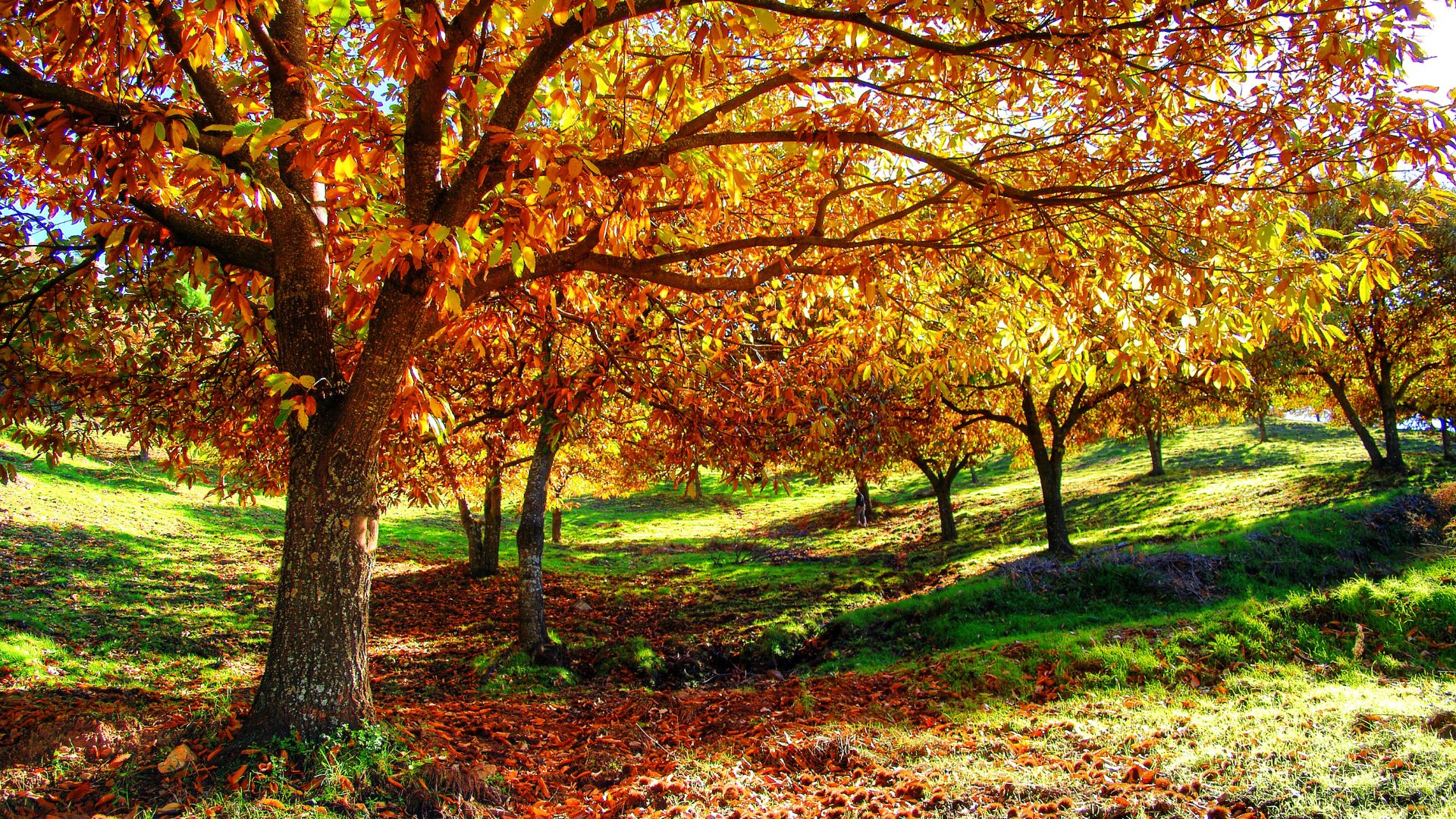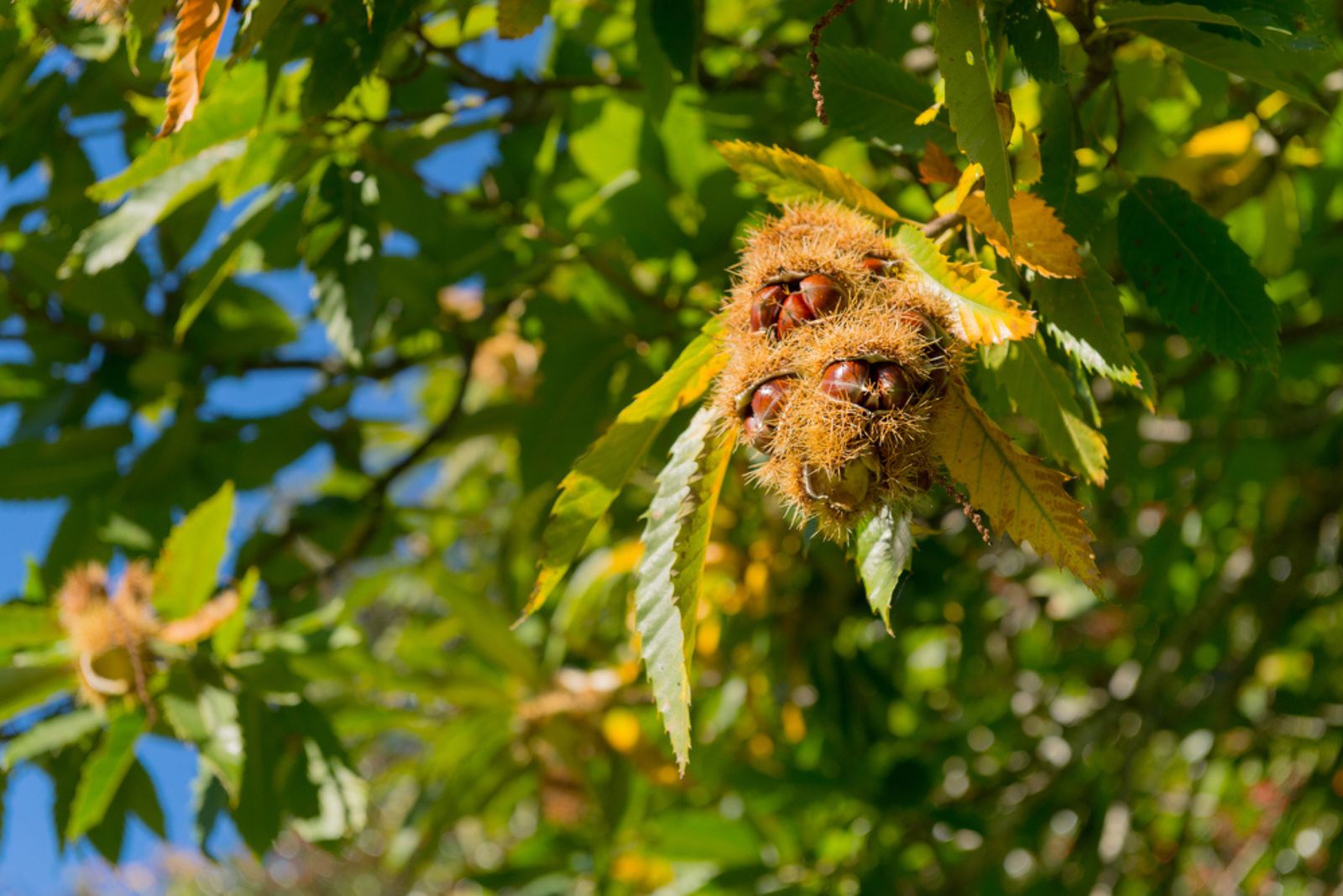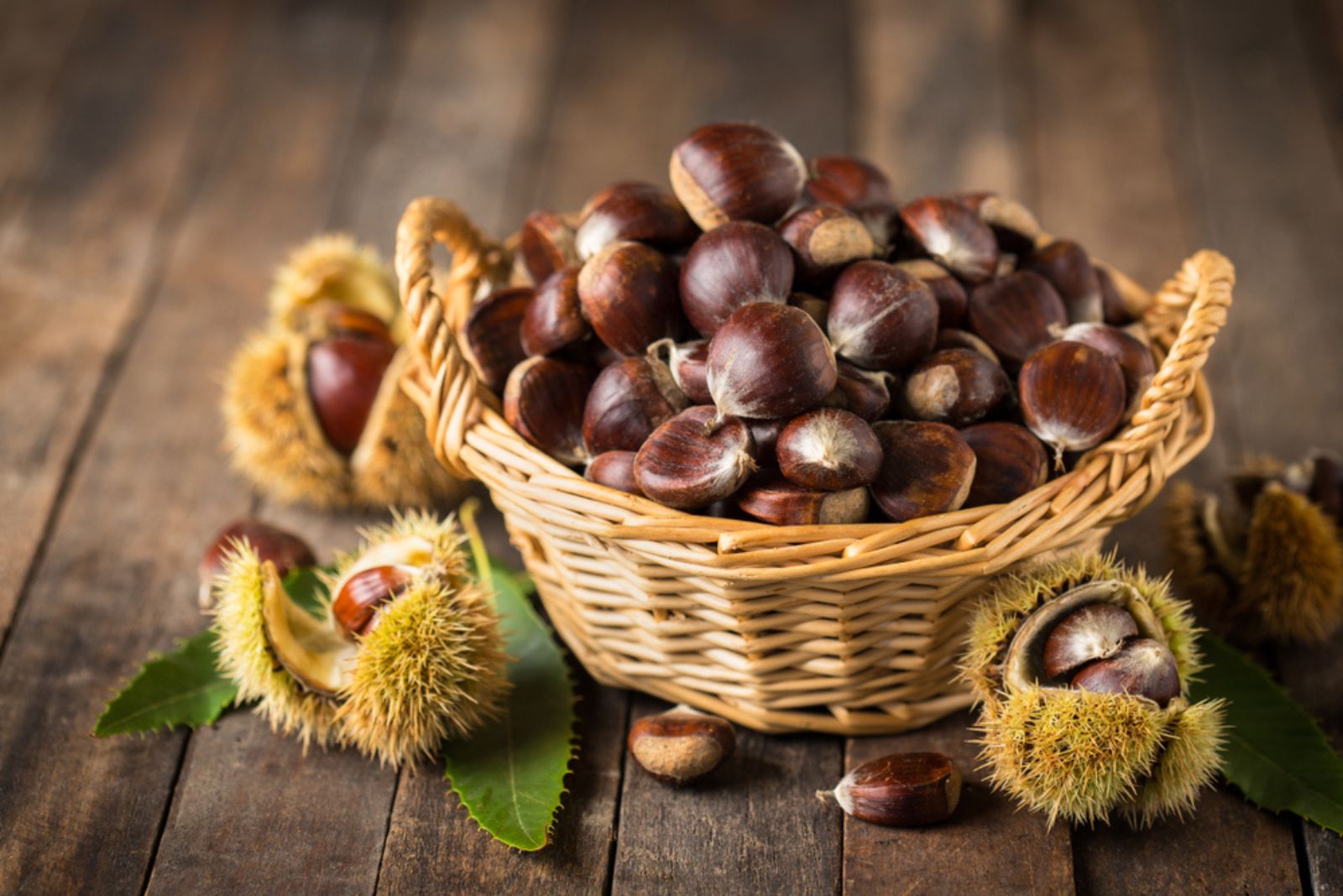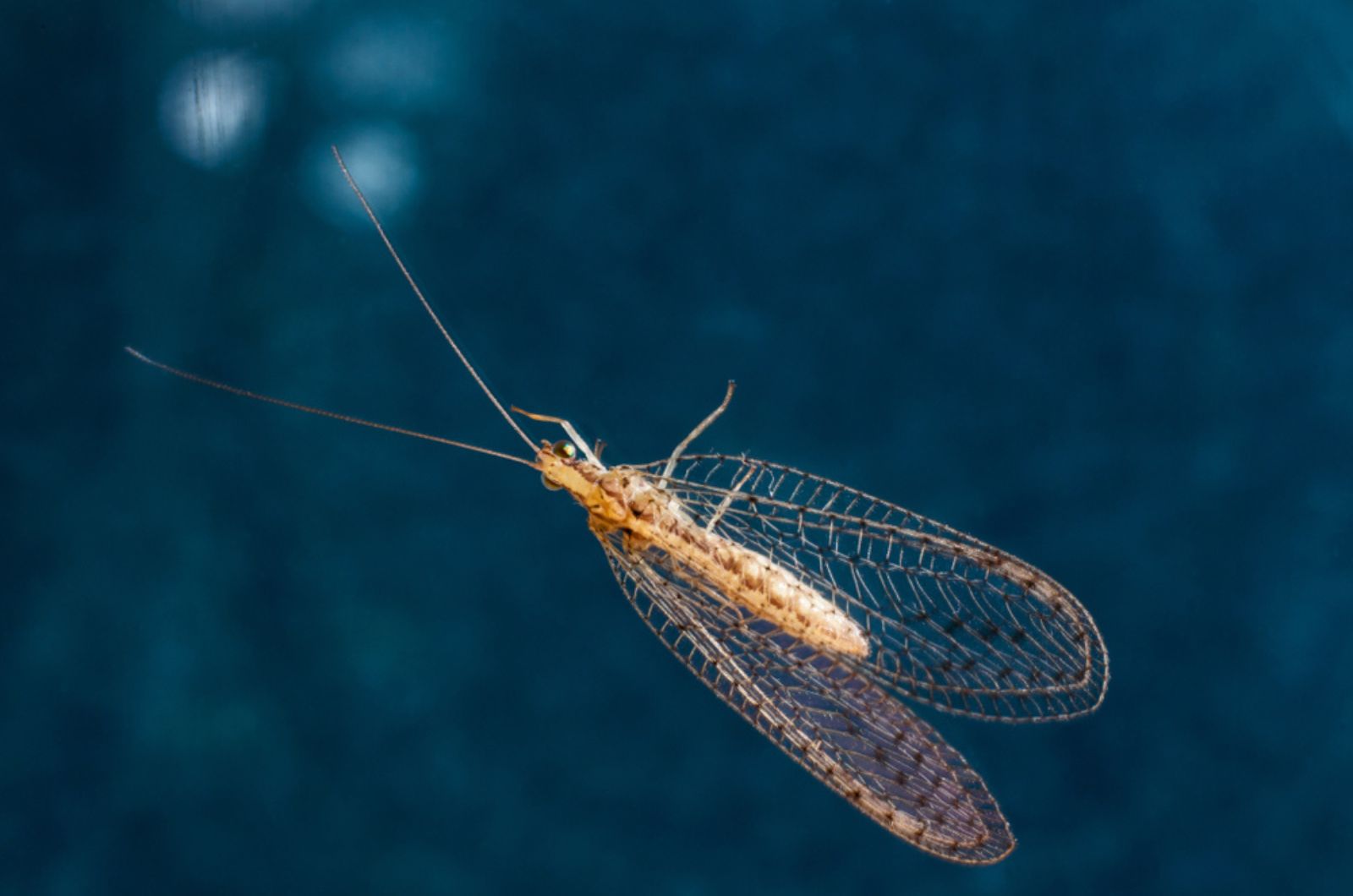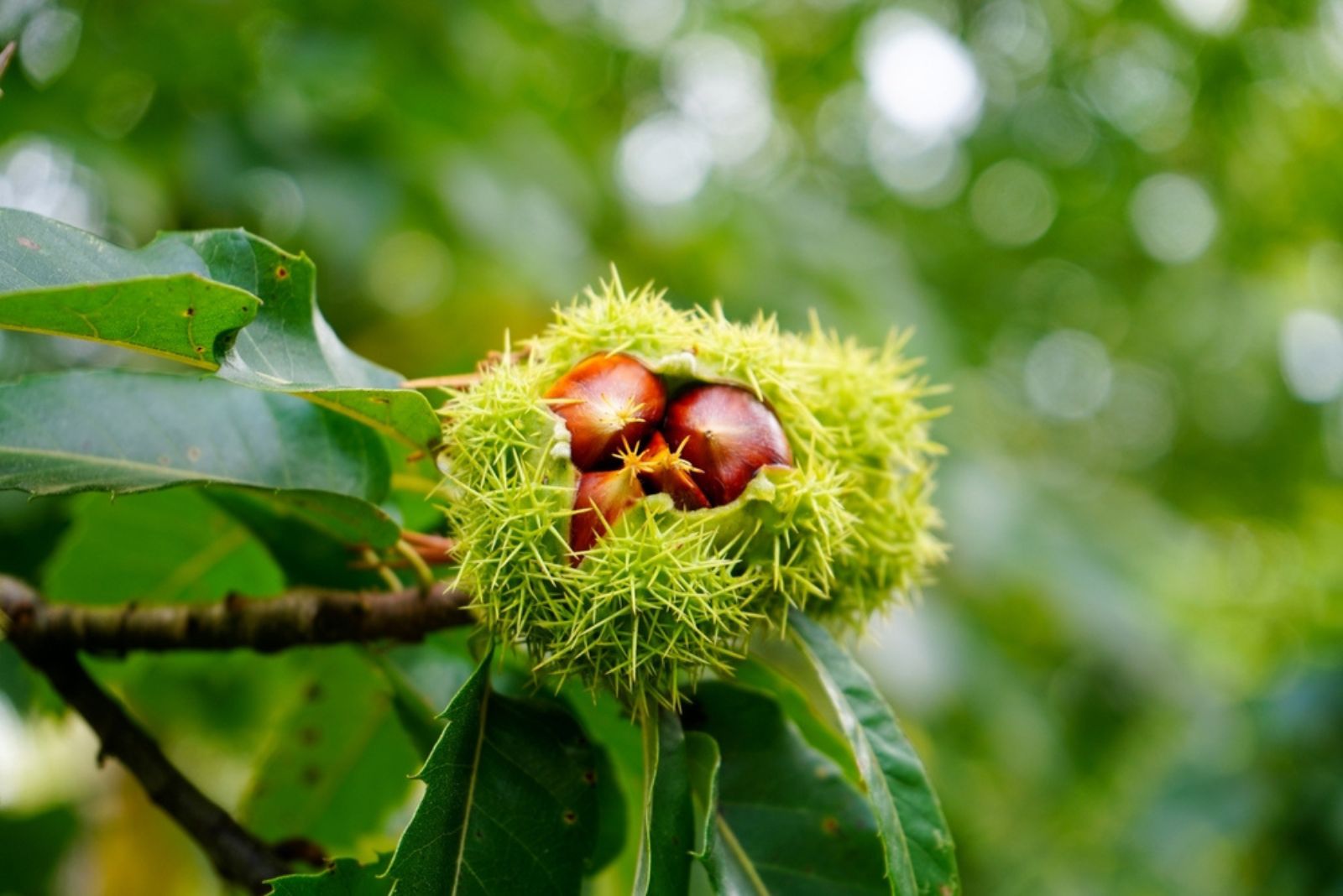If you are looking for a tree that is beautiful, useful, and full of surprises, then the chestnut tree is the perfect choice for you!
When I planted mine, I expected some shade and charm – but I also got happy birds, buzzing bees, and a delicious nut harvest (homegrown chestnuts always taste better).
These trees can live over 100 years, grow up to 60 feet tall, and attract plenty of wildlife with their flowers and nuts. They’re great for adding character to your yard and even better for making tasty snacks in the fall.
So, are you ready to grow one in your own backyard? If yes, here are some helpful tips to get you started!
You Should First Decide Whether Chestnut Trees Are Right For Your Yard
Before you commit, think about your yard’s needs and challenges.
Chestnut trees thrive in full sun, so no shady spots are allowed. They also don’t get along with certain pests and diseases, depending on where you live.
In the East, blight can be an issue; in the South, ink disease and gall wasps might show up. And don’t forget about the wildlife – chestnuts are irresistible to bears, raccoons, and turkeys. So, if you already have these hanging around, be prepared for even more visits!
Still, if you’re ready for the challenge, chestnut trees are totally worth it.
You’ll get to enjoy tasty nuts, beautiful flowers, marvelous bark, and the much needed shade during hot summer days.
Just imagine sitting under its wide branches on a sunny afternoon, sipping your favorite drink, and thinking, “Yep, I planted that”.
Also read: 4 Fast-Growing Evergreen Trees You Should Plant For A Beautiful Display Throughout The Year
If They Are, Go Ahead And Plant Those Seeds
With chestnut trees, you have two options: bury the seeds in the ground or start them indoors.
If you decide to plant the seeds directly, be warned that squirrels might come in and steal them. To avoid this, start your seeds indoors.
Plant them about half an inch deep in a potting mix that’s rich and barky. Keep things warm and cozy (70 to 80°F is ideal) and aim to start around late February. Once the weather warms up in May, you can move your seedlings outside.
Just dig a hole twice the size of the rootball, pick a spot with moist, acidic soil and make sure they receive a lot of sunlight. Weekly watering is a must, and if you don’t want hungry critters messing with your baby trees, put up a little fence.
Stakes might also help keep them upright until they’re strong enough to stand tall on their own.
Consider adding a layer of mulch around the base of the seedlings to keep the soil moist and reduce competition from weeds.
Be sure to check the mulch periodically, as it may need to be replenished or refreshed as it decomposes. If you’re in a region with heavy frost, consider adding a frost blanket or burlap around the base to help protect the young trees during colder nights.
Once your chestnut tree reaches a few years old, it will become more drought-tolerant. However, during its early years, consistent watering is essential. Make sure the root zone stays moist, but not waterlogged.
As the tree matures, it will develop deeper roots that can access water more effectively, but maintaining proper hydration during its early stages will help ensure strong growth!
Also read: 3 Simple Steps To Stake Your Trees For The Healthiest And Strongest Growth
Beware Of The Mess They Can Make
I told you in the beginning that chestnuts are definitely worth it, so remember that while we go through this section!
Chestnut trees come with a bit of mess.Their fallen leaves, burrs, and pods can clutter up your yard and become a slipping hazard if left unchecked.
All this debris might also attract weevils that could ruin your harvest. Clean up regularly, and if the smell of chestnuts isn’t your favorite (some say it’s a little fishy), you might want to rethink planting one near your patio.
Pruning your chestnut tree is another way to keep things in check. While you’re cleaning up the mess, it’s important to also trim away any broken or overcrowded branches. Not only does this reduce the amount of debris, but it also improves airflow and sunlight penetration, leading to better fruit production.
Prune the tree during the dormant season, ideally in late winter or early spring, before new growth begins. Use sharp, clean pruning shears to remove any unnecessary limbs at the base, being careful not to damage the tree’s bark.
A well-pruned chestnut tree will grow stronger, healthier, and more productive for years to come!
Also read: Here’s A Lovely Easy-To-Grow Ornamental Tree That’ll Have Birds Flocking To Your Yard
Keep An Eye Out For Pests
If you’ve noticed any changes in your chestnut tree – such as faded or curling leaves, blackened tips, or unusual spots – you might have a pest problem on your hands!
Chestnut weevils, aphids, and borers are among the most common pests that can damage your tree. While these pests may seem small, they can cause significant harm to both the tree and its fruit. Regular inspections will help you catch infestations before they get out of control.
Don’t let pests win! One of the best ways to prevent pest damage is through regular maintenance and cleaning around the base of your tree. Clear away fallen leaves and debris, which can harbor pests. Additionally, applying a gentle, natural pesticide or insecticidal soap will help keep pests from taking over.
By staying vigilant and following these easy pest-control tips, your chestnut tree will thrive, ensuring a healthy harvest year after year.
Harvest Chestnuts At Their Peak For Best Flavor
If you’re ready to pick your chestnuts, it’s all about patience and technique. Chestnuts are best harvested when the spiky burrs begin to split open on their own, usually in late fall.
The nuts inside will be dark brown and shiny, a clear sign they’re ripe. When harvesting, use a gentle touch to avoid damaging the chestnuts. Wearing gloves can help protect your hands from the sharp burrs.
Once harvested, chestnuts can be enjoyed in many ways. Roast them for a tasty treat, add them to stuffing, or use them to make rich, nutty flour.
Got more chestnuts than you can eat in one go? No worries! To keep them fresh, store them in a cool, dry spot. If you need to hold onto them for a few days, place them in the fridge, but make sure they’re in a breathable container to avoid excess moisture.
For long-term storage, your best option is freezing – just seal them in an airtight bag or container to maintain their rich flavor and texture until you’re ready to use them.
Chestnuts are not only delicious but also pack a nutritional punch. They are a great source of vitamin C, fiber, and antioxidants, all while being low in fat. Their versatile flavor profile makes them perfect for both sweet and savory dishes, from roasted snacks to creamy chestnut soups!
Don’t Forget To Admire Their Beauty Along The Way
Many folks don’t grow chestnut trees just for the nuts – they grow these trees to admire their magnificence and beauty!
In spring, they produce gorgeous clusters of white blooms called catkins, which ultimately fall on the ground like pretty flower confetti.
By fall, their leaves turn a warm bronze color that makes your garden nice and cozy. They grow and spread pretty fast, so you’ll be able to chill in shade during summer. Their low branches even keep the area underneath nice and cool.
And let’s not forget the sound of the wind rustling through their leaves! The gentle sway of the branches creates a peaceful, calming atmosphere that can turn your garden into a little sanctuary.
As they grow taller, chestnut trees become more than just a place for shade – they become a striking focal point in your landscape. Imagine a quiet afternoon spent beneath their wide canopy, enjoying the tranquility they bring to your space.
Plus, their sturdy trunks and sprawling branches are a perfect invitation for birds and other wildlife, making them an integral part of the local ecosystem! With every season, these trees offer something new – from the delicate spring blossoms to the cool shade of summer, and the rich colors of fall.
While chestnut trees can be a bit messy with their leaf and pod litter, the rewards they offer make it all worthwhile! Their graceful presence, beauty, and the sense of calm they provide make them a treasured addition to any garden, season after season.
Also read: 10 Bare Root Fruit Trees Perfect For A Bumper Harvest Next Season

